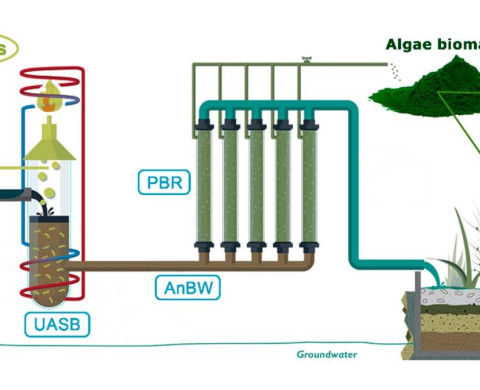Decentralised sanitation at NIOO

Wastewater treatment systems in the Netherlands serve their purpose on removing pollutants, but leave large amounts of useful elements, such as carbon, nutrients and micro elements, to go to waste. Researchers at the Netherlands Institute of Ecology (NIOO-KNAW) are working on a new treatment system that uses microalgae and bacteria to reclaim these valuable elements in a valuable biomass, while still removing pollutants, such as pharmaceuticals and human pathogens.
Black water (toilet wastewater) and grey water (remaining wastewater) are separated on-site. Black water is collected by vacuum toilets that are flushed with only 1 L ground water per flush. This concentrated carbon- and nutrient-rich stream is then treated by anaerobic digestor (Upflow Anaerobic Sludge Blanket reactor) that converts the organic carbon into biogas, which is used for heating the reactor to 35°C. The effluent of UASB or anaerobically-treated black water (AnBW) will then be treated in a microalgae-bacteria photobioreactor, that is under research at NIOO. The effluent from the photobioreactor will be finally polished in a constructed wetland, and discharged in the front pond of NIOO’s building. The constructed wetland is currently used for treating the grey water stream.
